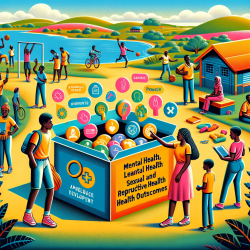Stuttering is a speech disorder that affects many individuals, presenting challenges in communication that can impact self-esteem and social interactions. Traditional approaches to stuttering treatment have evolved, with research highlighting the effectiveness of intensive group fluency training programs. A groundbreaking study, "An Intensive Group Fluency Training Program for Young Stutterers in a Community Setting" by Cindy M. Millar and Lynne M. MacLean, offers valuable insights into a behaviorally-based fluency shaping program that has shown significant results in improving speech fluency among young stutterers. This blog explores the key findings of this research and provides practical advice for practitioners looking to enhance their therapeutic approaches.
The study focused on adolescent and pre-adolescent stutterers, employing a comprehensive program that included establishment, transfer, and maintenance phases. Notably, the program emphasized attitudinal change, parental and community involvement, and was conducted in a multidisciplinary community mental health setting. The intensive training component took place over a twenty-day summer clinic, with maintenance addressed throughout the following year.
Program Objectives and Description
The primary objective was to shape fluency behavior in adolescents and pre-adolescents, ensuring fluency is maintained and generalized outside of the clinic setting. The program was successful in achieving this, with clients demonstrating less than 5% dysfluency at six months and one year post-therapy. The eclectic approach to treatment, drawing from various sources and incorporating features of transfer, maintenance, and attitudinal change, was a key factor in the program's effectiveness.
The program was offered through a community mental health clinic, emphasizing a family-focused and community-based treatment philosophy. This setting facilitated the transfer and maintenance activities, supporting the clients in applying their fluency skills in real-life situations. Clients were selected based on the severity of stuttering, commitment to completing task requirements, and the level of family or professional support.
Therapy Procedures and Results
The therapy procedures included three hours of clinical therapy per day, five days a week, for nineteen or twenty days, supplemented by daily homework assignments. The program was structured into three phases: establishment, transfer, and maintenance, each designed to progressively build and reinforce fluency skills. Parents and family members were also involved in the treatment process, participating in weekly sessions to observe and support the clients.
The results of the program were compelling, showing significant improvements in speech fluency and attitudes towards speech for all participants. These improvements were maintained at six-month follow-up sessions, demonstrating the program's long-term effectiveness.
Implications for Practitioners
This study offers several key takeaways for practitioners:
- Intensive and Multifaceted Approach: An intensive, behaviorally-based program that includes establishment, transfer, and maintenance phases can be highly effective in treating stuttering.
- Family and Community Involvement: Involving the client's family and the wider community in the treatment process can enhance the transfer and maintenance of fluency skills in real-life settings.
- Customized Treatment Plans: Treatment should be tailored to the individual needs of the client, taking into consideration their commitment, family support, and the severity of stuttering.
- Monitoring and Maintenance: Ongoing monitoring and maintenance sessions are crucial for sustaining the improvements in fluency over the long term.
Implementing these strategies requires a commitment to a holistic and intensive approach to stuttering treatment. By adopting the methodologies outlined in this study, practitioners can significantly enhance the effectiveness of their therapy programs, offering hope and improved outcomes for individuals struggling with stuttering.
For practitioners interested in exploring this topic further and applying these techniques in their practice, An Intensive Group Fluency Training Program for Young Stutterers in a Community Setting provides a comprehensive overview of the program's objectives, procedures, and results. This research underscores the importance of a comprehensive, community-oriented approach to stuttering treatment and offers valuable insights for enhancing therapeutic outcomes.










